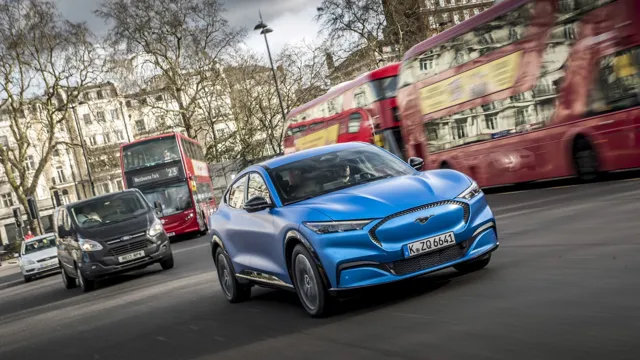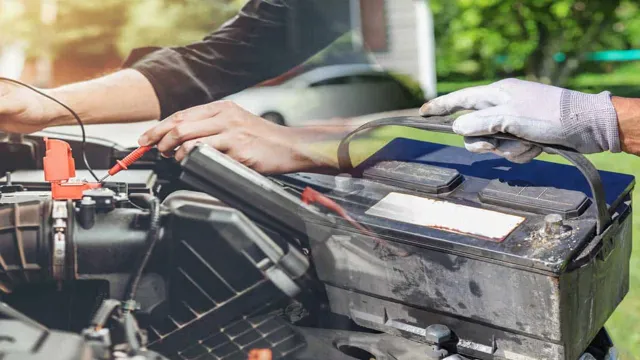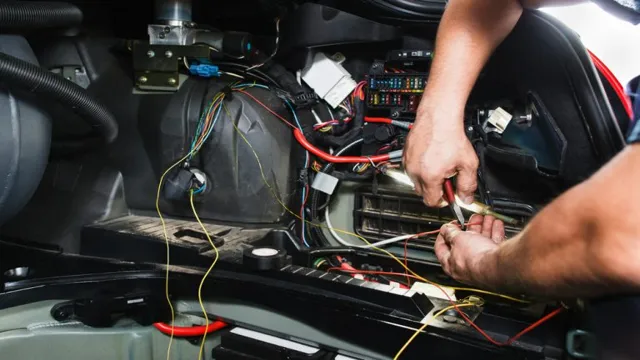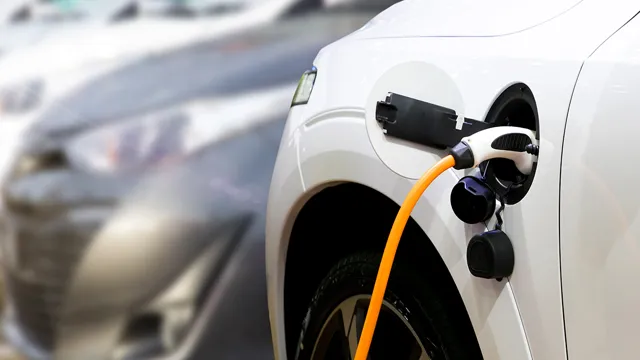Electric Cars vs. Alternators: How Electric Cars Charge Their Batteries
Electric cars are quickly becoming more common on our roads, and as drivers, we may find ourselves wondering about the different components that make up their unique design. One such part that often comes to mind is the alternator. This component plays a crucial role in traditional gasoline-powered vehicles, but what about electric ones? So, do electric cars have an alternator? The short answer is no, they do not.
Unlike traditional cars, electric vehicles use rechargeable batteries to power their motors, eliminating the need for an alternator. However, this doesn’t mean that electric cars don’t have their own set of unique components and challenges, such as regenerative braking systems and charging stations. In this blog, we’ll take a look at why electric cars don’t have alternators, how they generate power, and other interesting facts about these eco-friendly vehicles.
Whether you’re an avid EV driver or just curious about this exciting technology, let’s explore the world of electric cars together.
Explaining the Basics of Electric Cars
One of the common misconceptions about electric cars is whether they have an alternator to charge the battery. The answer is no. Unlike traditional gasoline-powered cars, electric cars don’t have an alternator.
Instead, they rely on regenerative braking and plug-in charging to recharge the battery. Regenerative braking occurs when the electric motor acts as a generator and converts the kinetic energy of the moving car back into electricity, which gets stored in the battery. Plug-in charging is when the battery is charged by plugging the car into an electrical outlet or a charging station.
Electric cars do have a DC-DC converter that is responsible for converting the high-voltage DC electricity from the battery to the low-voltage DC electricity needed to power the car’s electronics and accessories. Alternatively, some hybrid cars have an alternator and a battery to supplement their electric power source, but electric cars exclusively rely on electric power.
Electric Cars and Batteries
Electric Cars and Batteries – Explaining the Basics of Electric Cars Electric cars have been growing in popularity in recent years. These vehicles run on electric motors and are powered by rechargeable batteries. The basic principle of an electric car is similar to that of a gasoline-powered car, but the power source is different.
Instead of burning fossil fuels in an engine, an electric car converts electricity stored in the battery into mechanical energy to power the motor. The battery is the heart of an electric car, and it determines how far the car can go on a single charge. The capacity of the battery is measured in kilowatt-hours (kWh), and the higher the capacity, the longer the car can go before needing a recharge.
Typically, electric cars range from 60 to 300 miles on a single charge depending on the battery’s capacity. One of the benefits of electric cars is that they are cheaper to operate and maintain than gasoline-powered cars. Since they run on electricity, they can be charged at home, which is much cheaper than filling up at a gas station.
Additionally, electric cars have fewer moving parts, which means less maintenance and repairs over time.
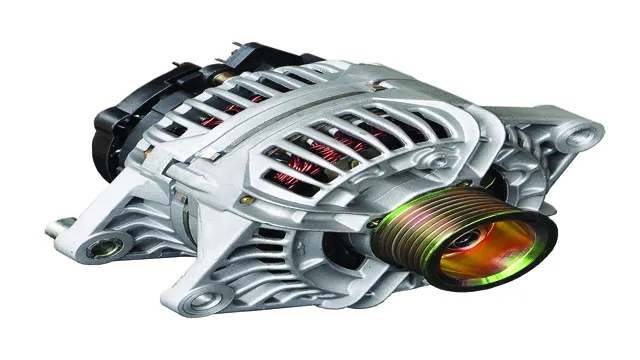
The Role of the Alternator in Conventional Vehicles
In conventional vehicles, the alternator plays a crucial role in ensuring that the car battery is sufficiently charged. It is essentially a generator that converts mechanical energy produced from the engine’s rotation into electrical energy. The alternator produces a current that flows through the car’s electrical system, providing power to the various components such as the lights, radio, and air conditioning.
However, in electric cars, the role of the alternator is non-existent. Instead, electric cars use on-board chargers, which convert AC power from charging stations to DC power to recharge the battery. As a result, electric cars do not require an alternator, making them simpler and more efficient in comparison to conventional vehicles.
The battery in an electric car stores energy, which is then used to power the electric motor that moves the vehicle. In essence, it acts as both an energy storage system and a source of power. Overall, while the alternator plays a critical role in conventional vehicles, electric cars have eliminated their need for it, paving the way for a cleaner, more energy-efficient future for automobile transportation.
Electric Cars and Charging Systems
When it comes to electric cars, many people wonder if they have an alternator to charge the battery. The answer is no, electric cars do not have an alternator as they rely solely on their rechargeable batteries to power the vehicle. Unlike traditional gasoline-powered cars, which use an alternator to charge the battery while the car is running, electric cars use regenerative braking to convert energy created by the braking process into electricity and store it in the battery.
Additionally, electric cars typically require a charging station to recharge the battery instead of filling up at a gas station. While this may seem like a drawback, electric cars have come a long way in terms of range and charging time, making them a viable option for many drivers today. So, although electric cars do not have an alternator, they have an innovative system to generate and store the electricity needed to power them on the road.
How Electric Cars Charge Their Batteries
Electric cars are becoming increasingly popular due to their sustainability and cost-effectiveness. One of the main concerns about electric cars is the charging system. Electric cars charge their batteries with the help of a charging station.
The charging station delivers power from the electricity grid to the car’s battery through a charging cable. The charging process can take anywhere from 30 minutes to a few hours depending on the charging station and the car’s battery capacity. The charging stations range from Level 1, which uses a standard household outlet, to Level 3, which is a fast charging station capable of charging the car within 30 minutes.
Electric cars usually come with a built-in onboard charger that converts the AC voltage to DC to charge the battery. A unique feature of the electric car’s charging system is regenerative braking. The car’s battery is charged by converting the kinetic energy produced by the car’s brakes into electrical energy.
This process helps to extend the car’s driving range and improve overall efficiency. With the growing number of electric cars on the road, advancements in charging technology are being made to make the charging process even more convenient and speedy.
Electric Cars and Regenerative Braking
Electric cars are becoming more popular as people become more concerned about the environment. One of the benefits of electric cars is regenerative braking. Regenerative braking occurs when the car slows down, and the kinetic energy created is transferred back to the battery as electrical energy.
This helps to recharge the battery and reduce the amount of energy required to charge the car. Another essential aspect of electric cars is their charging systems. There are three main types of charging systems: Level 1, Level 2, and DC fast charging.
Level 1 charging takes the longest as it uses a standard household outlet and can take up to 20 hours to fully charge the car battery. Level 2 charging uses a 240-volt outlet and can fully charge the battery in about 4-8 hours. DC fast charging is the quickest option and can charge the battery to 80% in as little as 30 minutes.
The charging system that someone chooses will depend on their charging needs, and there are many options available to make it more convenient, such as home charging stations and public charging networks. The future of electric cars and charging systems looks bright as advances continue to improve technology and make electric cars more practical for everyday use.
Electric Cars and Onboard Chargers
Electric cars have revolutionized transportation, but charging them has always been a bit of a challenge. Thankfully, onboard chargers have made things much easier. These chargers are installed in the car and allow for the battery to be charged when connected to a charging station.
The charging time can vary greatly depending on the battery size and the charging station’s power, but typically, an onboard charger can charge a car in just a few hours. One crucial aspect of electric cars is the charging system they use. There are two types: AC and DC.
AC charging is the most common and can be found at many public charging stations. This system uses the onboard charger to convert the AC power to DC power to charge the battery. On the other hand, DC charging skips the onboard charger and uses direct current to charge the battery, making it a much faster option.
Overall, onboard chargers have made the process of charging electric cars much smoother and more efficient. As more charging stations are installed worldwide, electric cars will become even more practical for everyday use and reduce our reliance on fossil fuels. With onboard chargers and advanced charging systems, the future of transportation is looking bright!
Answering the Question
One question that many people ask about electric cars is whether they have an alternator to charge the battery. The short answer is no – electric cars do not have alternators, as they do not rely on combustion engines like traditional cars do. Instead, electric cars use a system of regenerative braking and charging ports to keep their batteries charged and ready to go.
Regenerative braking is a process by which the car’s kinetic energy is captured and converted into electrical energy, which is then stored in the car’s battery. This means that every time you slow down or brake, you are actually helping to charge your car’s battery. Additionally, electric cars can be charged at home, at charging stations, or even through solar power.
Overall, while electric cars do not have alternators, they have an innovative and efficient system of charging that allows them to operate without the need for fossil fuels.
Alternators and Electric Cars
When it comes to electric cars, many people wonder whether they still require an alternator. The answer is no, they don’t. Unlike traditional gasoline-powered cars, electric cars run on batteries and don’t have internal combustion engines that require constant charging.
Instead, electric cars charge their batteries through regenerative braking or by plugging them into an electrical outlet. This means that there’s no need for an alternator to generate electricity to keep the battery charged. In fact, an alternator would only add weight and complexity to an electric car without providing any added benefit.
While some hybrid electric cars still use alternators to supplement their electric power, pure electric cars don’t need them at all. So the next time you’re wondering whether an alternator is necessary for an electric car, you can rest assured that it’s not.
The Differences Between Alternators and Electric Car Charging Systems
When it comes to charging a car, there are two main systems to consider: alternators and electric car charging systems. The main difference between the two is the source of energy they use to charge the car’s battery. Alternators rely on the car’s engine to generate kinetic energy, which is then converted into electrical energy to charge the battery.
This means that the alternator can only charge the battery when the engine is running, limiting its charging capabilities. On the other hand, electric car charging systems use an external power source, such as a charging station or a home outlet, to charge the batteries directly. This means that electric car charging systems can charge the car’s battery even when the engine is not running, making them more convenient and efficient than alternators.
So, if you’re in the market for an electric car, make sure to check the charging system it uses to ensure that you have a reliable and efficient means of charging your car’s battery.
Conclusion
In short, no, electric cars do not have an alternator to charge the battery. Alternators are a staple of traditional internal combustion engines, which require them to charge the battery. However, electric vehicles use regenerative braking and plug-in charging to maintain the battery’s charge.
So the next time you see an electric car on the road, you can be confident that there is no alternator humming away under the hood, and that the future of transportation is electricity-powered and eco-friendly.”
FAQs
Do electric cars have an alternator to charge the battery?
No, electric cars do not have an alternator as they do not use fuel-burning engines. Instead, they rely on regenerative braking and plugging in to charge their batteries.
How do electric cars charge their batteries?
Electric cars charge their batteries by plugging them into an electric power source, such as a wall socket or charging station. They can also charge through regenerative braking, which converts the car’s kinetic energy into electrical energy to store in the battery.
How long does it take to charge an electric car battery?
The time it takes to charge an electric car battery depends on the battery capacity and the charging method. A Level 1 charging, which uses a standard 120-volt outlet, can take up to 48 hours to fully charge. A Level 2 charging, which uses a 240-volt outlet or a charging station, can take 4 to 12 hours depending on the car’s battery size. DC fast charging, which charges up to 80% of the battery in 30 minutes, is the fastest charging option but is not widely available.
What happens if an electric car runs out of battery?
If an electric car runs out of battery, it will stop running like any other car running out of fuel. However, electric cars usually have a range estimator that indicates how much charge is left and they also typically provide a reserve to allow drivers to get to a charging station. If the battery completely runs out, the car may need to be towed to a charging station or another location where it can be plugged in.
